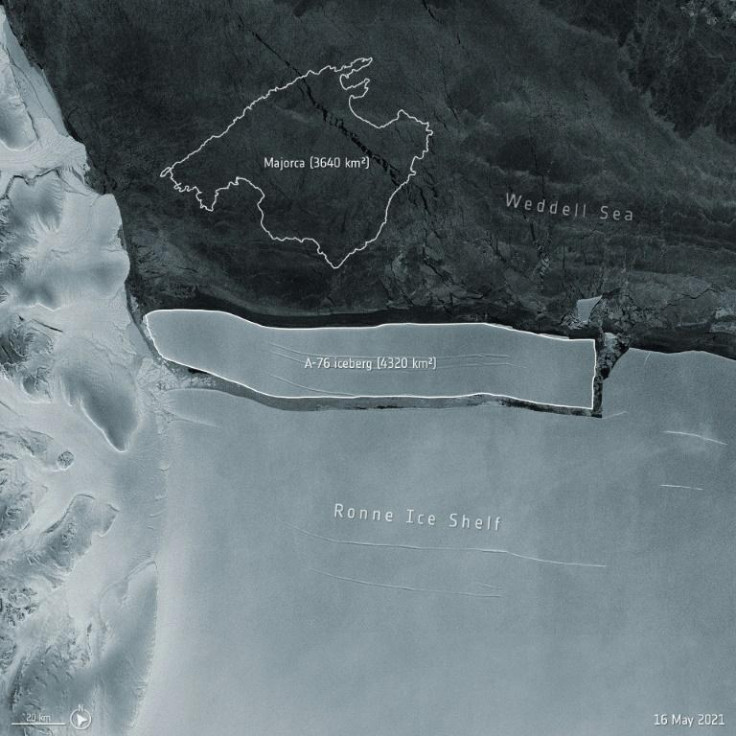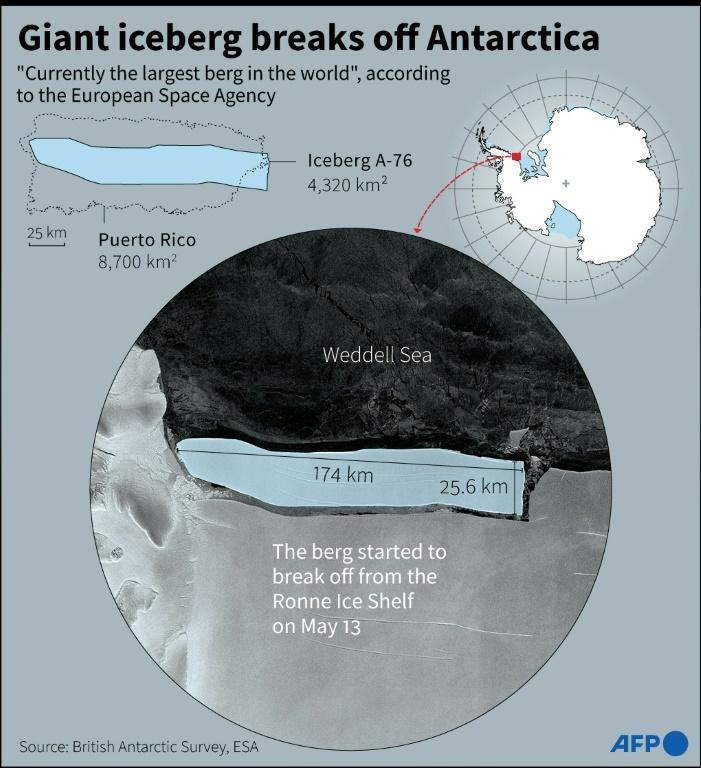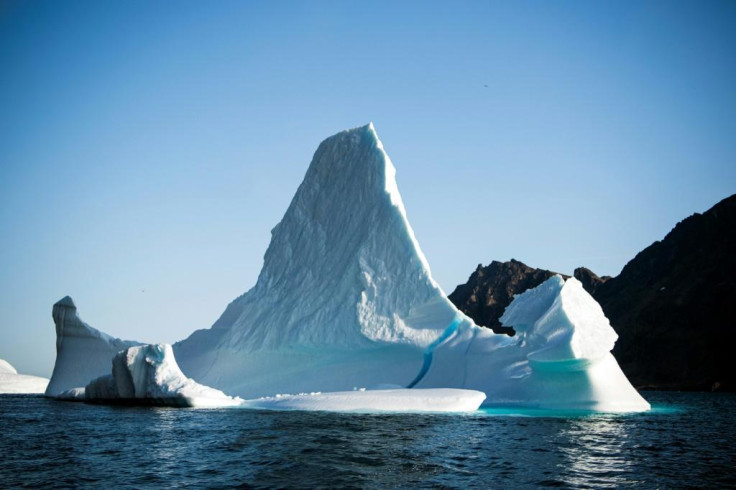World's largest iceberg breaks off Antarctica: European Space Agency
Icebergs form when hunks of ice break off from ice shelves or glaciers and begin to float in open water.
A huge ice block has broken off from western Antarctica into the Weddell Sea, becoming the largest iceberg in the world and earning the name A-76.
It is the latest in a series of large ice blocks to dislodge in a region acutely vulnerable to climate change, although scientists said in this case it appeared to be part of a natural polar cycle.
Slightly larger than the Spanish island of Majorca, A-76 had been monitored by scientists since May 13 when it began to separate from the Ronne Ice Shelf, according to the US National Ice Center.
The iceberg, measuring around 170 kilometres (105 miles) long and 25 kilometres wide, with an area of 4,320 square kilometres is now floating in the Weddell Sea.

It joins previous world's largest title holder A-23A -- approximately 3,880 sq km in size -- which has remained in the same area since 1986.
A-76 was originally spotted by the British Antarctic Survey and the calving -- the term used when an iceberg breaks off -- was confirmed using images from the Copernicus satellite, the European Space Agency said.
It may be a giant, but A-76 is by no means the largest iceberg in recent years.
The monstrous A-68 iceberg calved in 2017 from the Larsen ice shelf, which has warmed faster than any other part of Earth's southernmost continent.

At 5,800 km2, 350 meters thick and weighing a trillion tons A-68 was one of the largest icebergs ever seen.
Last year the berg, by then known as A-68a after a piece snapped off, appeared to be on a collision course with a remote South Atlantic island home to thousands of penguins and seals, threatening to impede their ability to gather food.
But it broke apart before it could cause any damage to the abundant wildlife in the British Overseas Territory of South Georgia.
Anne Braakmann-Folgmann, a researcher in iceberg motion at the School of Earth and Environment at Leeds University, said it was likely A-76 would follow the trajectory of A-68 towards South Georgia.

"How long this will take and how much the iceberg will fragment before reaching the island, as well as the exact trajectory are hard to predict, though," she told AFP.
Icebergs form when hunks of ice break off from ice shelves or glaciers and begin to float in open water.

Their formation is part of a natural process, although one which can be accelerated by warming air and ocean temperatures due to human-caused climate change.
In this case, however, scientists say that the formation of A-76 is a result of the "natural cycle" of the Ronne Ice Shelf.
"The ice shelf is constantly being fed ice from the Antarctic continent, and eventually chunks break off the ice shelf in this way, forming these big flat icebergs and maintaining a balance," said Alex Brisbourne, a Glaciologist at the British Antarctic Survey.
He said because icebergs are already floating, they do not significantly contribute to sea level rise as they melt.
"Elsewhere around the Antarctic continent however, the warming ocean is melting other ice shelves and this is allowing the ice to drain more quickly off the continent, increasing the rate of sea level rise," he added.
Earth's average surface temperature has gone up by one degree Celsius since the 19th century, enough to increase the intensity of droughts, heat waves and tropical cyclones.
But the air over Antarctica has warmed more than twice that much.
Ice sheets atop Greenland and West Antarctic hold enough frozen water to lift oceans a dozen metres (40 feet), drowning cities and redrawing the planet's coastlines.
Major chunks of the Peninsula's Larsen Ice Shelf -- the largest remaining in the region -- disintegrated within days in 1995, and again in 2002. This was followed by the breakup of the nearby Wilkins Ice Shelf in 2008 and 2009.
A study of the Larsen Ice Shelf published Wednesday in the journal Geology confirmed that it had been stable for the past 10,000 years.
They found that the breakup of ice shelves along the eastern Antarctic Peninsula was linked to warmer atmospheric temperatures gradually moving southward over the past half century, while warmer seas weakened the ice sheets from below.
Icebergs are traditionally named after the Antarctic quadrant in which they were originally detected, then a sequential number.
If they break apart more letters are added to differentiate the fragments.
To qualify as an iceberg, an ice block must be higher than 4.8 metres (16 feet) above sea level, be at least 29 to 49 metres thick and cover an area of at least 500 square metres, according to the US National Oceanic and Atmospheric Association.
Smaller chunks are known as "bergy bits" and "growlers" it says.
Copyright AFP. All rights reserved.
This article is copyrighted by International Business Times, the business news leader





















